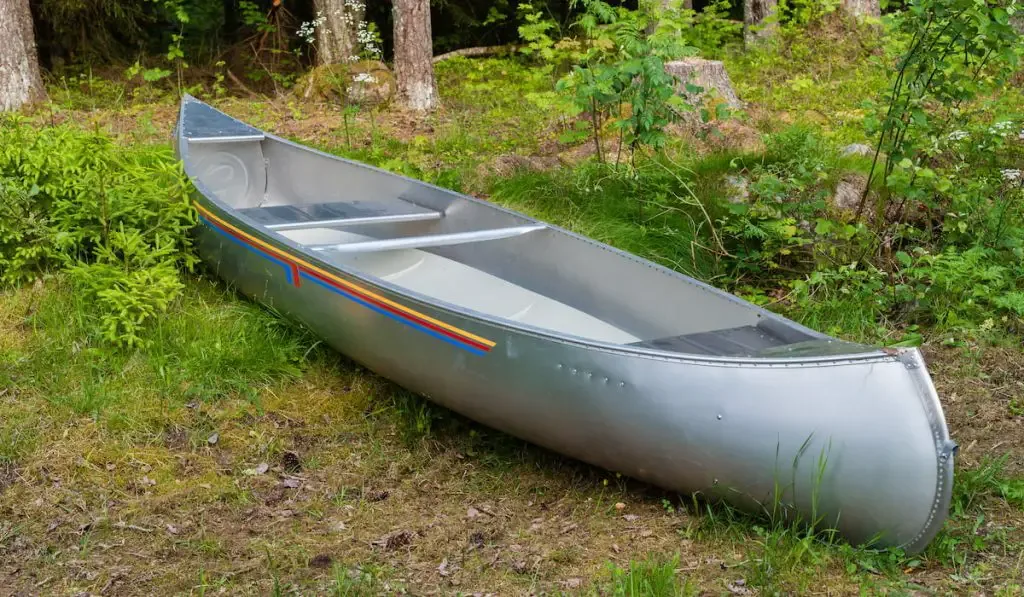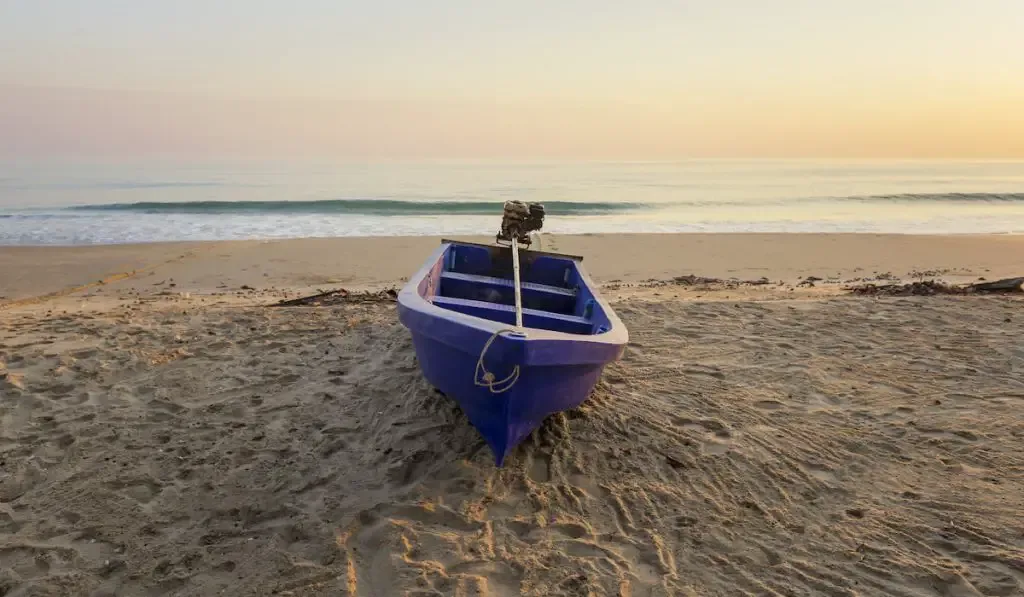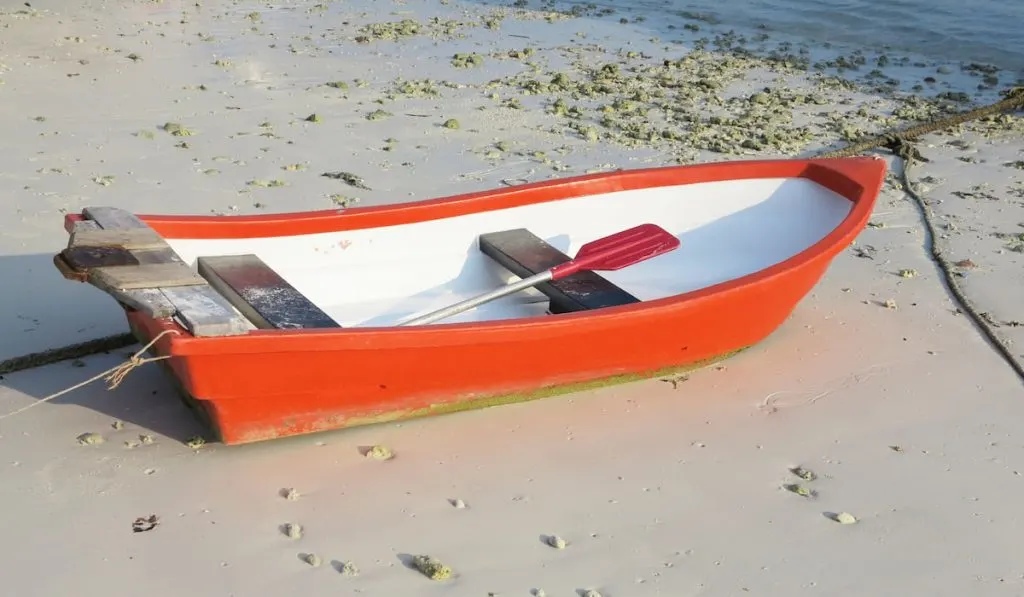If you’re a canoe enthusiast, then you’ll understand the dilemma of trying to decide between aluminum and fiberglass canoes. Canoes are not just for pleasure; they are for racing, white water touring, and have been part of the Olympics since the 1930s. For this reason, it is important to get a canoe that will offer you good service.
There are many benefits to both materials, and the answer will depend on your preferences and needs. Aluminum and fiberglass canoes have their own advantages and disadvantages and to know which one is better requires taking a closer look at each canoe.

Advantages of Aluminum Canoes
Aluminum canoes are made combined with other metals such as magnesium, silicon, and nickel to make them hard enough for building a canoe.
Here are some advantages to having an aluminum canoe:
Durability
If you’re paddling off rocks or dragging your aluminum canoe along rocks or reefs, then an aluminum canoe will not be as affected by this type of wear and tear.
Aluminum canoes mostly bounce away from obstructions, but if they take a major hit, aluminum hulls mostly get dents that you can pound and smooth out get them back in shape.
Resistance
One of the major benefits of an aluminum canoe is its resistance against corrosion, so the vessel will last for many years.
The sun does not weaken the structure of aluminum canoes as it does with fiberglass canoes. This makes them more durable as compared to a fiberglass canoe. An aluminum canoe will rust if not properly galvanized. But if it is properly galvanized, it will only suffer minor surface corrosion.
Cost
Aluminum boats have for a long time been cheaper than fiberglass canoes. You can get an aluminum canoe with the exact specifications of a fiberglass canoe at a cheaper price.
Over time, their prices have gone higher due to the advancement in technology. However, they are still cheaper than fiberglass canoes.
Maintenance
An aluminum canoe is easy to maintain as all it needs is rinsing, unlike fiberglass canoes that need waxing and buffing with a special gel coat.
Maintains shape
Aluminum canoes do not warp or change shape when exposed to different weather elements like sun or snow.

Disadvantages of Aluminum Canoes
Prone to drift
Aluminum canoes are lightweight. This makes them less stable in windy conditions and thus more prone to drifting further when it’s windy.
Difficult to customize
They are also difficult to customize. Aluminum is not malleable like fiberglass material, and this makes it difficult to customize the hull. However, it is possible to make some modifications to the interior.
Can corrode
Failure to take good care of your aluminum canoe may cause corrosion even though they are purported to be corrosion-proof.
Material
Aluminum canoes are noisy. They make it hard to have a conversation with your partner and may cause a nuisance when you want to have a relaxing time.
The aluminum material also absorbs heat, and the surface gets too hot in the summer and too cold in the winter to touch.
You should choose an aluminum canoe:
- If you will be sailing in shallow waters
- If you are looking for long-lasting canoes
- If you want an easy maintenance vessel

Advantages of Fiberglass Canoes
Fiberglass is a common material in the making of canoes. This is probably because this material can be molded in different shapes and designs. Fiberglass materials are used in creating different boating vessels and in improving these vessels for different sports activities.
Fiberglass canoes are made from resin material, and glass fibers bonded together in a mold and are then left to harden for some time. A smooth gel is applied after the curing process to give it a smooth finish. This gel makes the fiberglass canoe resistant to scrapes and dents.
Should you buy or rent a fiberglass canoe? Well, consider some advantages and disadvantages:
Steady
Fiberglass canoes are heavier than aluminum canoes. This may not make them easy to transport but it does make them steady for seafaring activities because these canoes don’t drift easily in the wind.
The molding makes them easy to customize for speed and efficiency in water and is the best choice for canoeing in rocky waters, unlike aluminum canoes.
They have sharp entry and exit lines to make them fast, efficient, and easy to maneuver in the water.
Maintenance
Fiberglass canoes have a gel coat that protects their integrity. This makes them low maintenance, and mostly a repair patch kit is all the canoe will need.
Fiberglass canoes have sharp entry and exit lines which sets them apart from other canoes. This design is what makes them efficient, fast, and maneuverable in the water.
Aesthetic
Fiberglass canoes can be molded into different beautiful designs, unlike aluminum canoes that stick to one model. Fiberglass canoes also come in a variety of colors and are customizable to nearly any specification.

Disadvantages of Fiberglass canoes
Here are some of the limitations a fiberglass canoe has:
Limited
The sharp entry and exit lines make them unsuitable for canoeing through waves.
Prone to cracking
Fiberglass canoes do not handle impacts very well because they are stiff. The gel coating can crack, and thus, there is a need to be careful when using them on flat water. Stress and repeated use of fiber canoes can also cause them to crack.
Factors To Consider When Buying a Canoe
A canoe is any lightweight boat, narrower than many other vessels, with a length greater than the width and pointed at both ends. It can be propelled by one or more persons facing forward sitting or kneeling on seats within the vessel and working a paddle having one blade at each end.
Canoes are an extremely fun way to spend your time outdoors. And to get the best canoe, there are several factors you should consider.
Length and width
The first factor to consider is the length and width of your canoe because these two factors are related to stability which you will need more of if you plan on doing rougher water than a flat lake or stream.
Stability also comes into play when you are carrying items on your canoe. The weight of everything you carry will affect your stability, so the lighter your load is at any given time, the more stable it will be in the water.
Number of paddlers vs. number of seats
These two factors come into play because most canoes have different sitting capacities for different numbers of paddlers.
The number of seats and the number of paddlers you have should be a balance between efficient movement through water and comfort while on the canoe.
Weight capacity
You will need to know how much your canoe can safely carry in weight before you purchase it because you don’t want to overload your canoe and risk tipping or sinking.
Price range
Pricing for canoes varies depending on the type, construction material, and accessories added to the canoe, so the price is something you will need to consider before purchase.
If you’re looking into getting a canoe that has more than just the basics but is still within your budget you will need to look for a canoe made of aluminum or fiberglass because these two types of canoes are typically better priced than other materials such as wood.
Purpose and use
The final factor you should consider before you start shopping for a canoe is the purpose and use you have in mind.
The purpose and use of a canoe will affect what you need to look for in certain areas such as length, width, stability, number of paddlers vs. seats, weight capacity, price range, materials used, etc.
Weight
One of the most important considerations when buying a canoe is weight. This is because the weight affects how easy it is to transport, store, load onto a vehicle or trailer, and carry over obstacles like rocks or logs in streams or creeks.
Depending on the level of comfort you need, fiberglass or aluminum canoes are suitable for people of different weights. Lightweight models have a small carrying capacity, so they’re easier to transport, but they don’t offer as much space to move around when paddling.
They might be more appropriate for short trips or fishing since they’re easier to carry when empty. Still, it’s worth noting that they won’t offer the stability of larger fiberglass or aluminum canoes.

Frequently Asked Questions about Fiberglass and aluminum canoes (FAQs)
- Why are so many canoeists abandoning their aluminum canoes in favor of fiberglass canoes?
For their performance! Fiberglass is the superior material when it comes to responsiveness, or how quickly a canoe moves from paddle input to lateral motion.
Factors such as hull shape, longitudinal stiffness, and beam shape all affect a canoe’s responsiveness.
The combination of these factors gives fiberglass canoes a serious paddling performance advantage over aluminum, especially in rough water. In addition, aluminum boats are heavy for their size, requiring significantly more energy to propel them through the water than a lightweight fiberglass canoe.
- Why aren’t all canoes made from fiberglass?
There are several reasons: Availability – until recently, fiberglass has been a less available material than aluminum because of its relative scarcity in North America and Europe, but this is changing rapidly as the product becomes more popular.
- Can fiberglass canoes decompose?
Fiberglass is a durable material, and that is why it has a wide range of uses. Fiberglass doesn’t decompose because it is unaffected by weather and most chemicals.
In Conclusion
If you’re buying a canoe primarily for rough water, aluminum is a good choice. But for paddlers who spend most of their time paddling on calm, flat water, fiberglass may be a better choice because it’s lighter, more economical, and stronger.
If you are a first-time canoeist, aluminum is your best bet. This is because, as an amateur, you are bound to make a few sailing mistakes that could damage your hull.
If you’re buying a canoe that’s primarily going to be used on calm water, fiberglass may be a better choice. Aluminum canoes are better for paddlers who want a canoe that’s durable, lightweight, and easy to handle on rough water.
